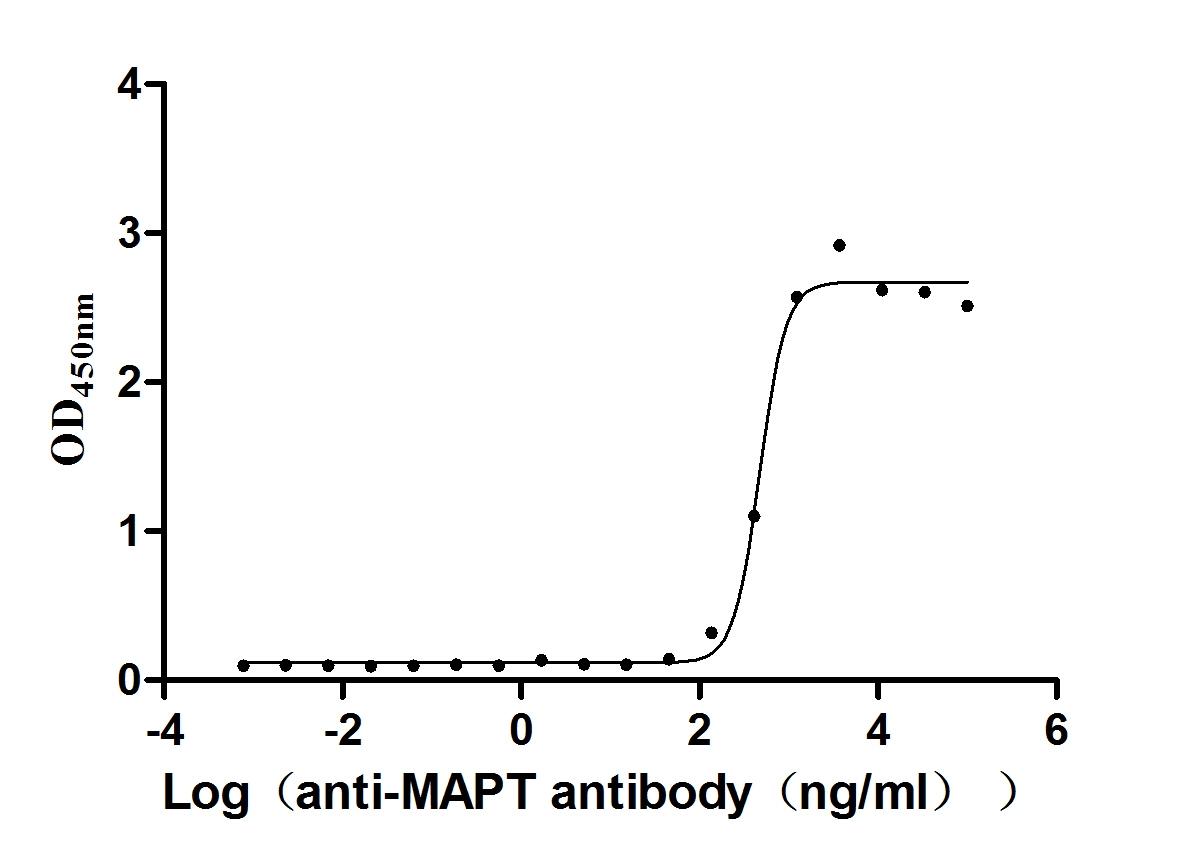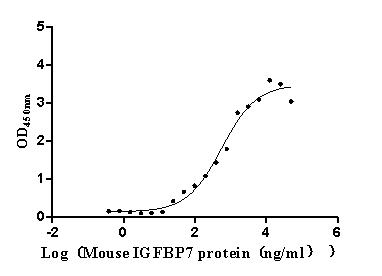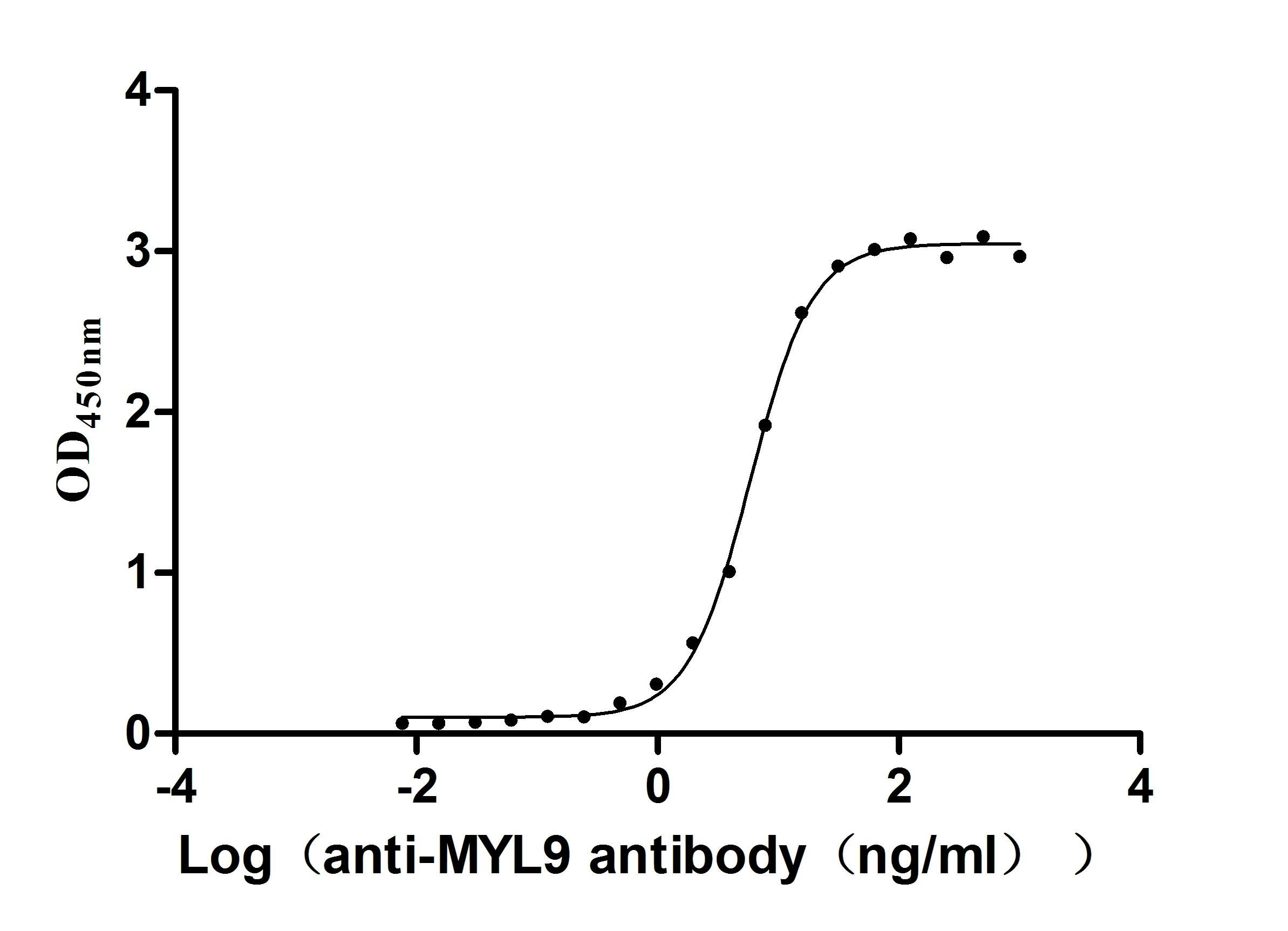Recombinant Rat Receptor-type tyrosine-protein phosphatase S (Ptprs), partial
-
中文名稱:大鼠Ptprs重組蛋白
-
貨號:CSB-YP731064RA
-
規(guī)格:
-
來源:Yeast
-
其他:
-
中文名稱:大鼠Ptprs重組蛋白
-
貨號:CSB-EP731064RA
-
規(guī)格:
-
來源:E.coli
-
其他:
-
中文名稱:大鼠Ptprs重組蛋白
-
貨號:CSB-EP731064RA-B
-
規(guī)格:
-
來源:E.coli
-
共軛:Avi-tag Biotinylated
E. coli biotin ligase (BirA) is highly specific in covalently attaching biotin to the 15 amino acid AviTag peptide. This recombinant protein was biotinylated in vivo by AviTag-BirA technology, which method is BriA catalyzes amide linkage between the biotin and the specific lysine of the AviTag.
-
其他:
-
中文名稱:大鼠Ptprs重組蛋白
-
貨號:CSB-BP731064RA
-
規(guī)格:
-
來源:Baculovirus
-
其他:
-
中文名稱:大鼠Ptprs重組蛋白
-
貨號:CSB-MP731064RA
-
規(guī)格:
-
來源:Mammalian cell
-
其他:
產(chǎn)品詳情
-
純度:>85% (SDS-PAGE)
-
基因名:
-
Uniprot No.:
-
別名:Ptprs; Receptor-type tyrosine-protein phosphatase S; R-PTP-S; EC 3.1.3.48; Leukocyte common antigen-related protein-tyrosine phosphatase 2; LAR-PTP2; Receptor-type tyrosine-protein phosphatase sigma; R-PTP-sigma
-
種屬:Rattus norvegicus (Rat)
-
蛋白長度:Partial
-
蛋白標簽:Tag?type?will?be?determined?during?the?manufacturing?process.
The tag type will be determined during production process. If you have specified tag type, please tell us and we will develop the specified tag preferentially. -
產(chǎn)品提供形式:Lyophilized powder
Note: We will preferentially ship the format that we have in stock, however, if you have any special requirement for the format, please remark your requirement when placing the order, we will prepare according to your demand. -
復溶:We recommend that this vial be briefly centrifuged prior to opening to bring the contents to the bottom. Please reconstitute protein in deionized sterile water to a concentration of 0.1-1.0 mg/mL.We recommend to add 5-50% of glycerol (final concentration) and aliquot for long-term storage at -20℃/-80℃. Our default final concentration of glycerol is 50%. Customers could use it as reference.
-
儲存條件:Store at -20°C/-80°C upon receipt, aliquoting is necessary for mutiple use. Avoid repeated freeze-thaw cycles.
-
保質期:The shelf life is related to many factors, storage state, buffer ingredients, storage temperature and the stability of the protein itself.
Generally, the shelf life of liquid form is 6 months at -20°C/-80°C. The shelf life of lyophilized form is 12 months at -20°C/-80°C. -
貨期:Delivery time may differ from different purchasing way or location, please kindly consult your local distributors for specific delivery time.Note: All of our proteins are default shipped with normal blue ice packs, if you request to ship with dry ice, please communicate with us in advance and extra fees will be charged.
-
注意事項:Repeated freezing and thawing is not recommended. Store working aliquots at 4°C for up to one week.
-
Datasheet :Please contact us to get it.
靶點詳情
-
功能:Cell surface receptor that binds to glycosaminoglycans, including chondroitin sulfate proteoglycans and heparan sulfate proteoglycans. Binding to chondroitin sulfate and heparan sulfate proteoglycans has opposite effects on PTPRS oligomerization and regulation of neurite outgrowth. Contributes to the inhibition of neurite and axonal outgrowth by chondroitin sulfate proteoglycans, also after nerve transection. Plays a role in stimulating neurite outgrowth in response to the heparan sulfate proteoglycan GPC2. Required for normal brain development, especially for normal development of the pituitary gland and the olfactory bulb. Functions as tyrosine phosphatase. Mediates dephosphorylation of NTRK1, NTRK2 and NTRK3. Plays a role in down-regulation of signaling cascades that lead to the activation of Akt and MAP kinases. Down-regulates TLR9-mediated activation of NF-kappa-B, as well as production of TNF, interferon alpha and interferon beta.
-
基因功能參考文獻:
- The present study found that astrocytes aberrantly and progressively expressed PTPsigma and LAR at the site of motor neuron degeneration in Tg ALS model rats with mutant SOD1. PMID: 28752900
- Our study shows that modulation of PTPsigma is a potential therapeutic strategy for root avulsion. PMID: 26464223
- PTPsigma functions as a presynaptic receptor for the glypican-4/LRRTM4 complex and is essential for excitatory synaptic transmission. PMID: 25624497
- results add a new layer of understanding to the critical role of PTPsigma in mediating the growth-inhibited state of neurons due to CSPGs within the injured adult spinal cord PMID: 25470046
- PTPSigma is a neuronal membrane receptor and has a role in rat presynaptic function and cell-cell communication. PMID: 12110683
- Trans-synaptic adhesions between netrin-G ligand-3 (NGL-3) and receptor tyrosine phosphatases LAR, protein-tyrosine phosphatase delta (PTPdelta), and PTPsigma via specific domains regulate excitatory synapse formation. PMID: 20139422
顯示更多
收起更多
-
亞細胞定位:Cell membrane; Single-pass type I membrane protein. Cell projection, axon. Perikaryon. Cytoplasmic vesicle, secretory vesicle, synaptic vesicle membrane. Cell junction, synapse, synaptosome. Cell junction, synapse, postsynaptic density. Cell projection, neuron projection. Cell projection, growth cone.
-
蛋白家族:Protein-tyrosine phosphatase family, Receptor class 2A subfamily
-
組織特異性:Detected in brain neocortex (at protein level). Detected in heart, testis and liver. Detected at lower levels in skeletal muscle, brain, spleen and kidney.
-
數(shù)據(jù)庫鏈接:
Most popular with customers
-
Recombinant Mouse Microtubule-associated protein tau (Mapt) (Active)
Express system: Mammalian cell
Species: Mus musculus (Mouse)
-
Recombinant Mouse Claudin-18.2 (Cldn18.2)-VLPs (Active)
Express system: Mammalian cell
Species: Mus musculus (Mouse)
-
Recombinant Mouse Complement component C1q receptor (Cd93), partial (Active)
Express system: Mammalian cell
Species: Mus musculus (Mouse)
-
Recombinant Human Transferrin receptor protein 1 (TFRC), partial (Active)
Express system: Mammalian cell
Species: Homo sapiens (Human)
-
Recombinant Human Myosin regulatory light chain 12A (MYL12A) (Active)
Express system: E.coli
Species: Homo sapiens (Human)
-
Recombinant Human Interleukin-12 receptor subunit beta-1(IL12RB1),partial (Active)
Express system: Mammalian cell
Species: Homo sapiens (Human)



-AC1.jpg)













